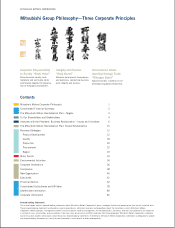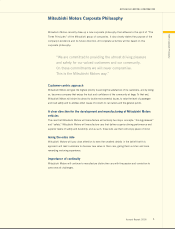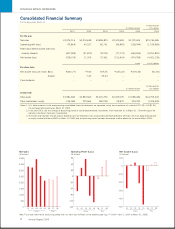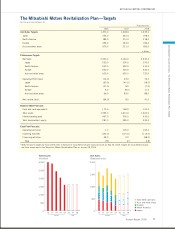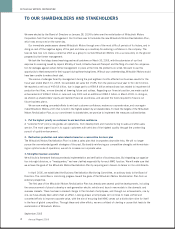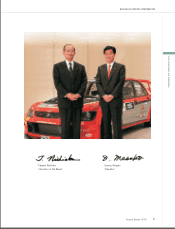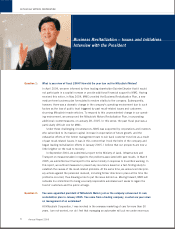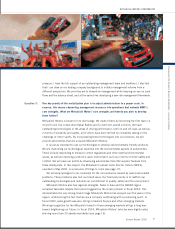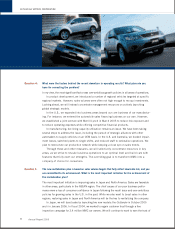Mitsubishi 2005 Annual Report Download - page 10
Download and view the complete annual report
Please find page 10 of the 2005 Mitsubishi annual report below. You can navigate through the pages in the report by either clicking on the pages listed below, or by using the keyword search tool below to find specific information within the annual report.
Annual Report 2005
8
MITSUBISHI MOTORS CORPORATION
Question 4: What were the factors behind the recent downturn in operating results? What plans do you
have for correcting the problem?
In my view, the most significant factor was over-ambitious growth policies in all areas of operations.
In product development, we introduced a number of regional vehicles targeted at specific
regional markets. However, sales volumes were often not high enough to recoup investments.
Looking ahead, we will instead concentrate management resources on actively launching
global strategic models.
In the U.S., we expanded into business areas beyond our core business of car manufactur-
ing. For instance, we entered the automobile sales financing business on our own. However,
we established a joint venture with Merrill Lynch in March 2005 to reduce risk exposure and
to reduce operating expenses while offering competitive financial products.
In manufacturing, declining capacity utilization remains an issue. We have been taking
several steps to address the issue, including the pursuit of strategic alliances with other
automakers to supply vehicles on an OEM basis. In the U.S. and Australia, we booked impair-
ment losses, switched plants to single shifts, and reduced staff to rationalize operations. We
plan to restructure our production network while keeping a close eye on sales trends.
Through these and other measures, we will selectively concentrate resources in key
areas, as we strive to rescale business operations to an optimal level and build cars with
features that fully exert our strengths. The overriding goal is to transform MMC into a
company of choice for consumers.
Question 5: The new revitalization plan is based on sales volume targets that fully reflect downside risk, and you
are committed to its achievement. What is the most important initiative for the achievement of
the revitalization plan?
The most important initiative is improving sales in Japan and North America. Sales are favorable
in other areas, particularly in the ASEAN region. The chief causes of our poor business perfor-
mance were a loss of consumer confidence in Japan following the recall issue and over-ambitious
policies for growing sales in the U.S. in the past. While we also want to boost sales in other
regions, restoring sales in Japan and North America will be the key to revitalizing the company.
In Japan, we will boost sales by launching two new models: the
Outlander
in October 2005
and
i
in January 2006. In fiscal 2004, we worked to regain customer trust through a free
inspection campaign for 3.4 million MMC car owners. We will continue to work to earn the trust of


